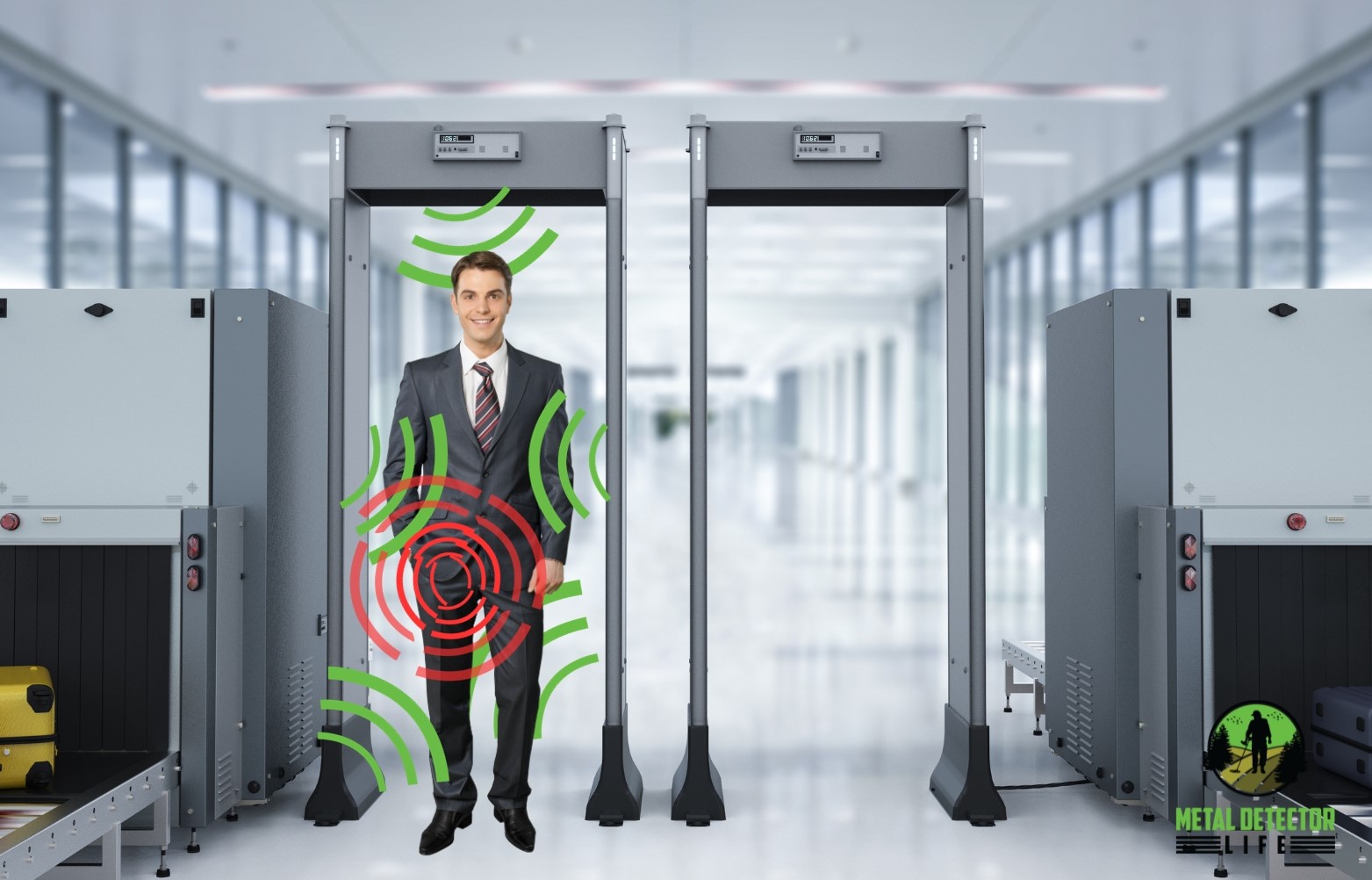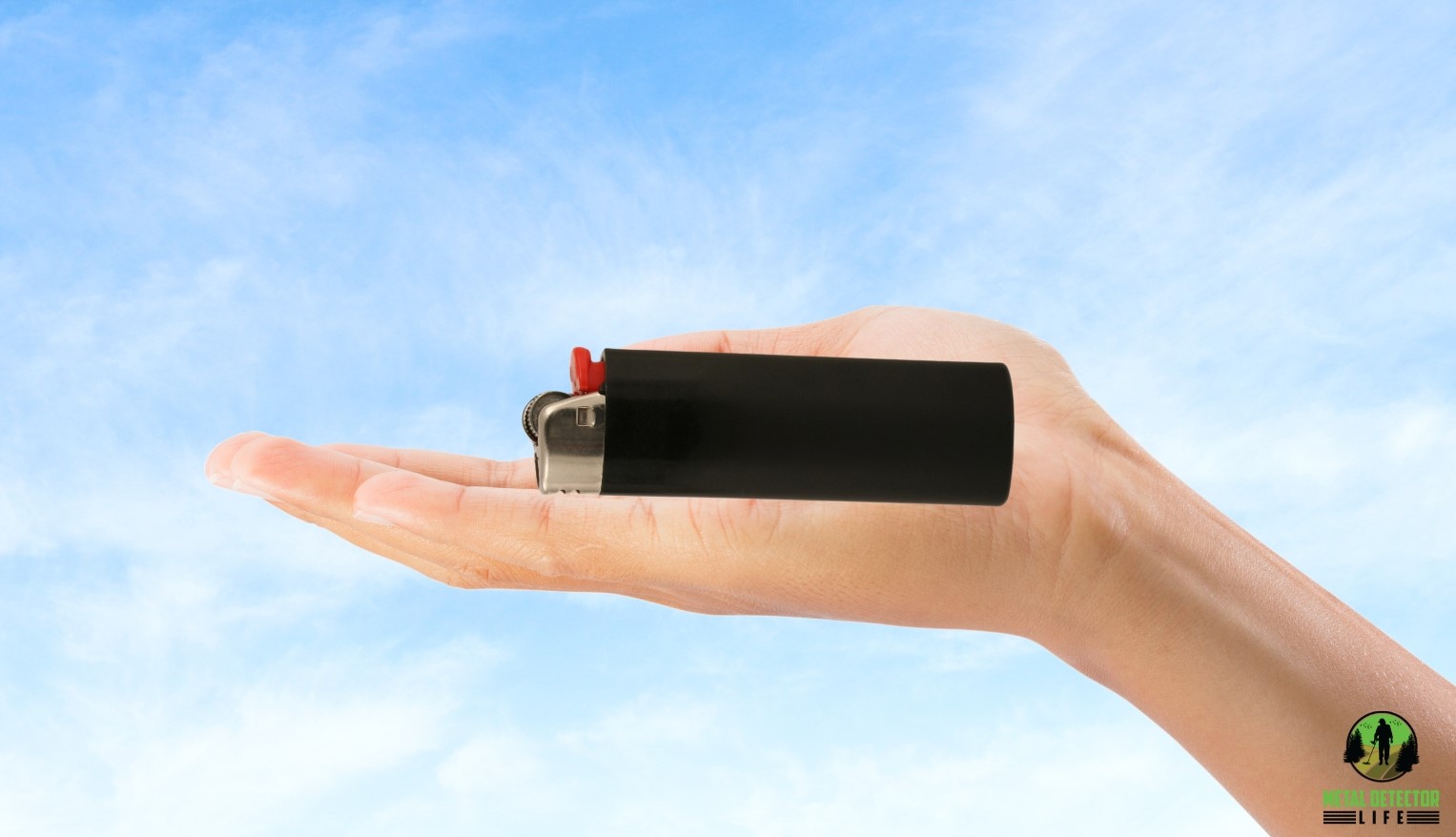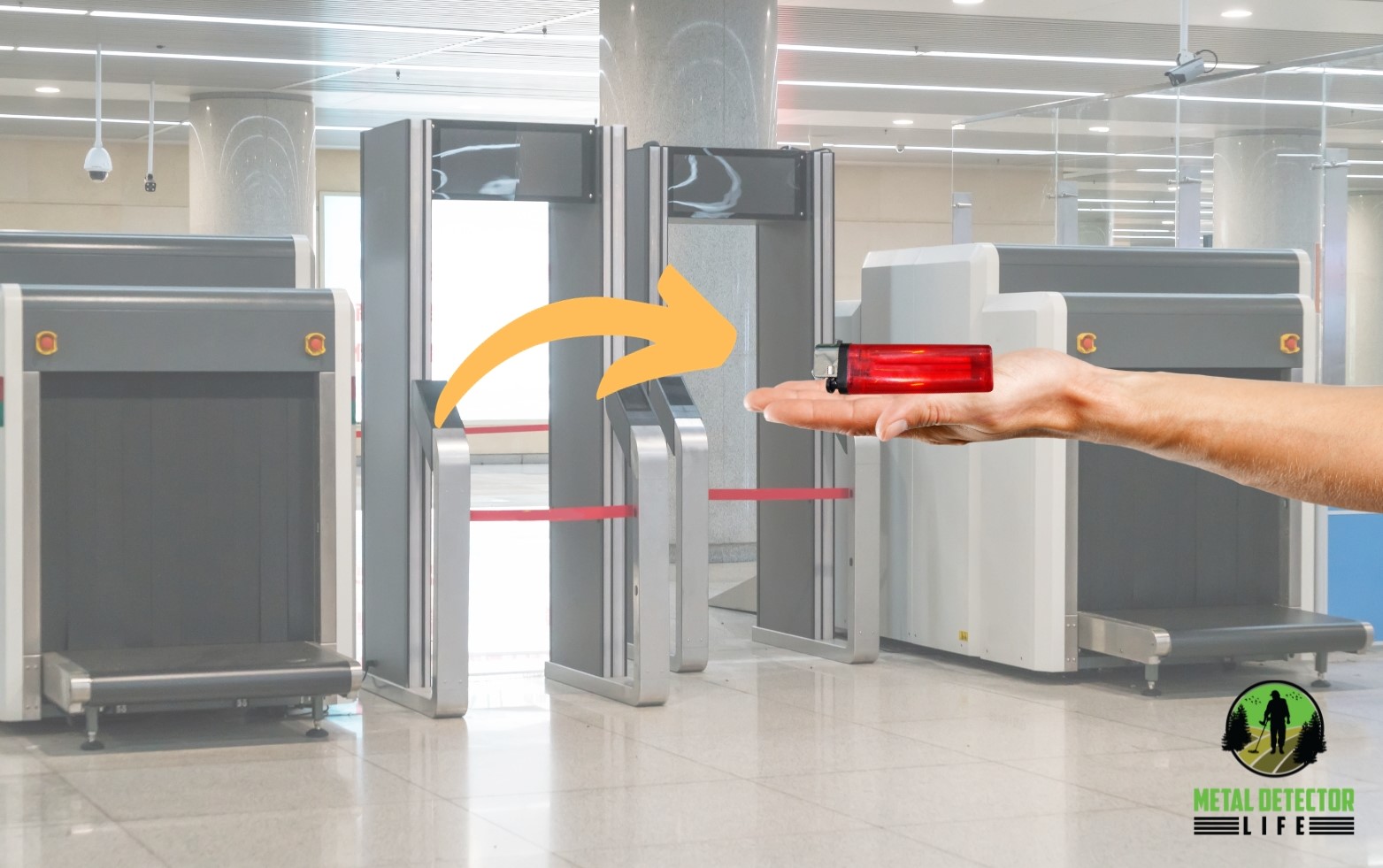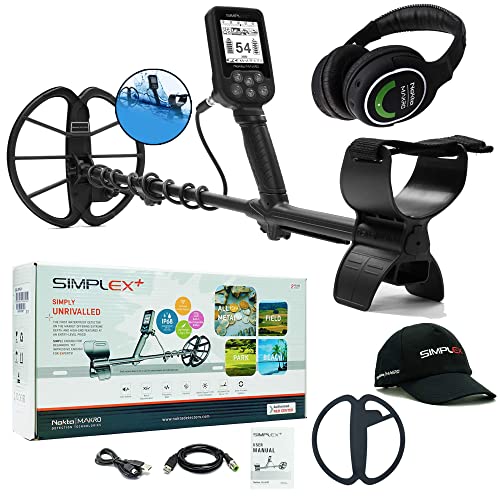Planning a nice vacation by air or looking forward to attending a big concert? Exciting! Whether it’s a holiday or a concert, you’ll need to pass through the metal detector at customs. You don’t want to stress about what you can or can’t bring through the metal detector.
One common item that raises questions about detection is a lighter. Therefore, the frequently asked question is…
…Can a metal detector detect a lighter?
Yes, nearly every metal detector will be able to detect a lighter because a lighter contains metal components such as the casing, the ignition stone, and the mechanism. These metal parts will disrupt the magnetic field of a metal detector, causing it to detect a lighter.
But don’t worry, not every metal detector will necessarily detect a lighter. This depends on several factors. In this blog, we will explore all these factors, and I’ll also provide you with tips on how to bring a lighter with you on your trip. Curious? Be sure to keep reading!
How does a metal detector detect a lighter?
To understand why a metal detector can detect a lighter, we need to delve into a specific physics principle. This principle is closely related to the electromagnetic fields produced and received by the metal detector.
A metal detector generates a magnetic field by means of a coil (which is essentially copper wire carrying electricity). If this magnetic field interacts with a metallic object like a lighter, the metal object will create its own magnetic field in response. This disrupts the original magnetic field produced by the metal detector, triggering a response from the detector.
Of course, this may sound a bit complex. That’s why I’ve summarized all the steps for you below
1. The metal detector generates an electromagnetic field
The first step in detecting a lighter is when the metal detector generates an electromagnetic field. This occurs when electricity flows through a copper wire, often referred to as a coil.
The produced magnetic field is directed towards the person who needs to walk through the metal detector (see the picture below).

2. The lighter reflects its own magnetic field
When the magnetic field from the metal detector intersects with the metallic object (in this case, the lighter), something remarkable happens: the lighter generates its own magnetic field.
This occurs due to what are called eddy currents. These are essentially internal waves or currents within the metallic object that arise when the object is subjected to a magnetic field.
These eddy currents produce their own magnetic field, which is then reflected back toward the coil of the metal detector (see the picture below).

3. The magnetic field of the metal detector will be disrupted
The coil of the metal detector consists of a transmitter and a receiver. The transmitter sends out the magnetic field, and the receiver picks up the reflected magnetic field from the metallic object.
The receiver continuously measures the difference between the outgoing and incoming magnetic fields. So, when the lighter reflects its own magnetic field, the metal detector’s receiver detects this reflected magnetic field, causing it to start beeping or signaling an alert.

4. The metal detector detects the lighter
This means that the metal detector will start beeping or indicating an alert (such as a lit indicator) when it detects a difference between the outgoing and incoming magnetic fields, signaling that it has detected the presence of the lighter!

What is a lighter made of?

To answer the question, “Can a metal detector detect a lighter?” it’s crucial to understand whether the lighter contains enough metal components to reflect its own magnetic field.
Most lighters consist of a plastic casing, a metal gas reservoir to withstand gas pressure, an ignition mechanism (often a metal wheel), a metal or plastic fuel regulator, and an ignition stone.
As you can see, most parts of a lighter are made of metal. Therefore, the metal detector will be able to detect most types of lighters.
Does a lighter set off all types of metal detectors?
It’s difficult to provide a 100% certain answer to this question. However, in general:
Yes, the metal components of a lighter are often large enough to be detected by all types of metal detectors. However, whether a metal detector detects a lighter depends on several factors, including:
- The sensitivity of the metal detector
- The discrimination settings of the metal detector
- The type of metal detector
The sensitivity of a metal detector
The sensitivity of a metal detector essentially determines how quickly it responds to a metal object. With high sensitivity, the chances of a metal detector locating the metal item are significantly greater. Conversely, when sensitivity is low, the likelihood of a metal detector finding a metal object diminishes.
The sensitivity levels vary among various metal detectors at the airport. Generally, airport metal detectors tend to have relatively high sensitivity levels, enabling them to quickly spot lighters. However, there are instances where a detector’s sensitivity may be so low that it fails to detect a lighter.
The discrimination settings of the metal detector
In addition to the sensitivity of a metal detector, the discrimination settings of the detector also play a role in detecting a lighter.
Discrimination simply means that the metal detector can differentiate between various metal objects based on the electrical conductivity properties of the respective item.
For instance, an airport metal detector can distinguish between a belt and a firearm, for example. It’s possible that the airport metal detector is configured in a way that the lighter is not detected due to its discrimination settings.
The type of metal detector
Whether a lighter is detected by a metal detector also depends on the type of metal detector in use. There are primarily four types of metal detectors:
- Induction Balance Metal Detectors
- Pulse Induction (PI) Metal Detectors
- VLF (Very Low Frequency) Metal Detectors
- Beat-Frequency Oscillation (BFO) Metal Detectors
In the following table you can see the different properties of each type of metal detector and whether it will detect a lighter or not.
| Type Of Detector | Detects A Lighter | Sensitivity To Metals | Detection Depth | Metal Discrimination | Suitability For Lighter Detection |
|---|---|---|---|---|---|
| Induction Balance | Yes | High | Moderate | Yes | Yes (but may miss deep lighters) |
| Pulse Induction | Yes | Very High | Deep | No | Yes |
| Very Low Frequency (VLF | Yes | High | Average | Yes | Yes |
| Beat-Frequency Oscillation | Yes | Low | Shallow | No | Yes (suitable for surface items) |
Are there lighters that can’t be detected by a metal detector?
In essence, all types of lighters do contain metal. This implies that, when the metal detector is properly configured, it should always be capable of detecting the lighter. However, there are certain factors that can make it more challenging to detect a lighter, but it is rare for the detector to be unable to detect it entirely.
There are situations in which it can be challenging for a metal detector to detect a lighter:
- Lighters with Non-Metallic Casings
- Incorrect Detector Settings
- Small and Thin Lighters
- Lighters Concealed Among Other Metal Objects
Lighters with Non-Metallic Casings
Often, the metal components of a lighter are located within its casing. If you’re using a lighter with a plastic casing, it may be more challenging for the metal detector to detect it simply because there is less metal to be picked up.
Incorrect Detector Settings
A metal detector won’t be able to detect a lighter when incorrect settings are used. Incorrect settings typically refer to the metal detector having a sensitivity set too low. Additionally, it could be using the wrong discrimination settings.
Small and Thin Lighters
A metal detector will face more difficulty in detecting small, thin lighters compared to large, thick ones. In some cases, the metal detector may not be able to detect a lighter at all simply because the lighter is too small and, therefore, contains too little metal to register a detection.
Lighters Concealed Among Other Metal Objects
When a lighter is wrapped or surrounded by other objects, it can result in a situation where a metal detector may fail to detect the lighter. This is because there is a larger medium for the magnetic field of the detector to penetrate, making it more challenging to pinpoint the presence of the lighter.
Are you allowed to take a lighter through a metal detector?

Whether you can pass through a metal detector with a lighter depends on the specific security policies and regulations of the organization or event you are attending. Generally, the following rules apply:
Airport Security
At most airports, it’s typically allowed to bring only a small disposable lighter through a metal detector. This lighter must be placed in your carry-on baggage as a general rule. Furthermore, it’s usually mandatory for the individual to keep this lighter with them during the flight.
Since the rules regarding the transportation of lighters can vary from one airline to another, I recommend checking the website of the airline you are flying with before heading to the airport. This way, you can ensure that you are aware of and in compliance with their specific policies regarding lighters and other restricted items.
Lighters are considered hazardous materials and are typically not allowed in the checked baggage due to the risk of accidental ignition or damage during handling. Therefore, it’s strictly prohibited to place a lighter in your checked baggage. It’s essential to avoid doing this at all times to comply with safety regulations.
Public Buildings
Whether you can carry a lighter through a metal detector at public buildings depends greatly on the rules of the specific facility. In many cases, small lighters without sharp points are allowed inside the building. To ensure that you can bring your lighter with you, I recommend looking up the rules of the public building in advance.
Concerts And Sports Events
At concerts, sporting events, or other entertainment gatherings, it’s often prohibited to carry a lighter through the metal detector. The reason behind this restriction is that lighters are considered objects that could be easily thrown. To safeguard the performers, athletes, or other important individuals, carrying a lighter is not allowed.
Can you bring a lighter on a plane?

Frequently, only a disposable lighter is allowed on an airplane, and it must be carried in your carry-on luggage. Passengers are often required to keep the lighter with them during the flight to prevent the risk of fire in checked bags.
Before heading to the airport, always review the rules and policies of the airline you’re flying with. Airlines often have varying regulations and policies, so staying informed is essential for a smooth journey.
Can a BIC lighter set off a metal detector?
A BIC lighter, like most disposable lighters, typically contains metal components, including the ignition mechanism and the flint wheel. As a result, the BIC lighter can disrupt the magnetic field of a metal detector, causing it to trigger an alarm.
However, it’s essential to understand that several factors determine whether a BIC lighter will set off a metal detector. Consider the following factors:
- Type of Metal Detector. Different types of metal detectors may have different levels of sensitivity and detection capabilities. Some may be more prone to detecting lighters than others.
- Sensitivity of the Metal Detector. The sensitivity settings of the metal detector play a significant role. A highly sensitive detector is more likely to detect a Bic lighter compared to one set with lower sensitivity.
- Size of the Lighter. The size of the lighter also matters. Larger lighters with more metal components are more likely to trigger a metal detector than smaller ones.
How do I find a lighter with a hobby metal detector?

If you’ve misplaced your lighter in your garden, a hobby metal detector can be a useful tool for recovering it.
To find a lighter with a hobby metal detector, you’ll need to use high sensitivity. Additionally, set the detector to the non-ferrous discrimination mode. Lastly, employ the correct search technique by keeping the search coil as close to the ground surface as possible. This will increase your chances of detecting the lighter effectively.
High sensitivity
A lighter is a very small metal object. This means that you’ll need to use high sensitivity to ensure the metal detector detects the small metal item.
So, continue increasing the sensitivity of the metal detector until you notice that the hobby metal detector is giving false signals (meaning it keeps beeping constantly).
When the metal detector produces too many false signals, you’ll need to lower the sensitivity until the detector provides clear and consistent signals!
Non-ferrous discrimination mode
A lighter often contains non-iron metal components, commonly referred to as non-ferrous metals. Most metal detectors offer both ferrous and non-ferrous modes. Therefore, opt for the non-ferrous mode when searching for a lighter.
If your metal detecting hobby leads you to discover a lighter, the metal detector will likely emit a loud and consistent high-pitched sound. This will help you identify it.
Proper search technique
Once you’ve selected the appropriate sensitivity and discrimination settings, it’s time to begin your quest for a lighter. It’s crucial to employ the correct search technique.
This entails keeping the search coil as close to the ground’s surface as possible without actually touching it. Swing it gently and methodically from left to right and vice versa.

Now, it’s a matter of hoping for some good luck and stumbling upon that lighter!
What is the best metal detector to detect a lighter?
For locating a lighter with a metal detector, it’s advisable to use a VLF (Very Low Frequency) metal detector. These types of metal detectors are generally affordable, offer good quality, and often come with solid warranties.
Some excellent VLF metal detectors include:
- The Garret AT Pro
- The Minelab Equinox 800
- The Bounty Hunter Tracker IV (a budget-friendly option)
- The Garret Ace 400
Some other good options are listed below:






Frequently Asked Questions
A metal detector can detect a lighter when it’s very close, usually within a few inches. The exact distance can depend on the detector’s settings and the type of lighter. But generally, it needs to be quite near for the detector to sense it.
If you accidentally go through a metal detector with a lighter in your pocket, it will likely set off the alarm. Security personnel will ask you to remove the lighter and may conduct further checks. It’s important to cooperate and follow their instructions to resolve the situation.
Metal detectorists can find lighters buried underground, but the depth at which they can detect them depends on several factors, including the type of metal detector and the composition of the lighter. Typically, lighters can be detected up to a few inches to a foot below the surface.

